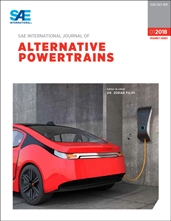Mechanical shock tests for lithium metal and lithium-ion batteries often require that each cell or battery pack be subjected to multiple shocks in the positive and negative directions, of three mutually perpendicular orientations. This paper focuses on the no-disassembly requirement of those testing conditions and on the CAE methodology specifically developed to perform this assessment.
Ford Motor Company developed a CAE analysis method to simulate this type of test and assess the possibility of cell dislodging. This CAE method helps identify and diagnose potential failure modes, thus guiding the Design Team in developing a strategy to meet the required performance under shock test loads. The final CAE-driven design focuses on the structural requirement and optimization, and leads to cost savings without compromising cell or pack mechanical performance. As an example, this method is applied to Ford Motor Company’s current generation of air-cooled, prismatic cell lithium-ion Plug-in Hybrid Electric Vehicles (PHEVs). Physical testing performed on the final optimized design correlated well with the CAE results thus providing validity to the simulation methodology.
